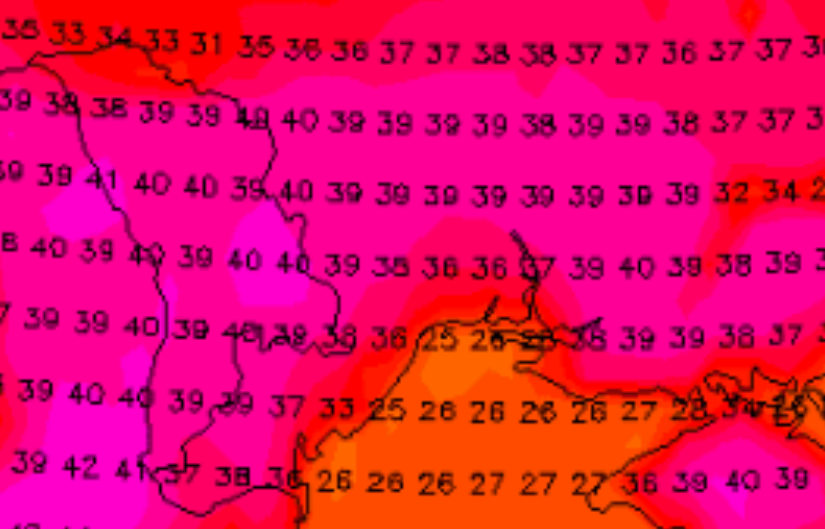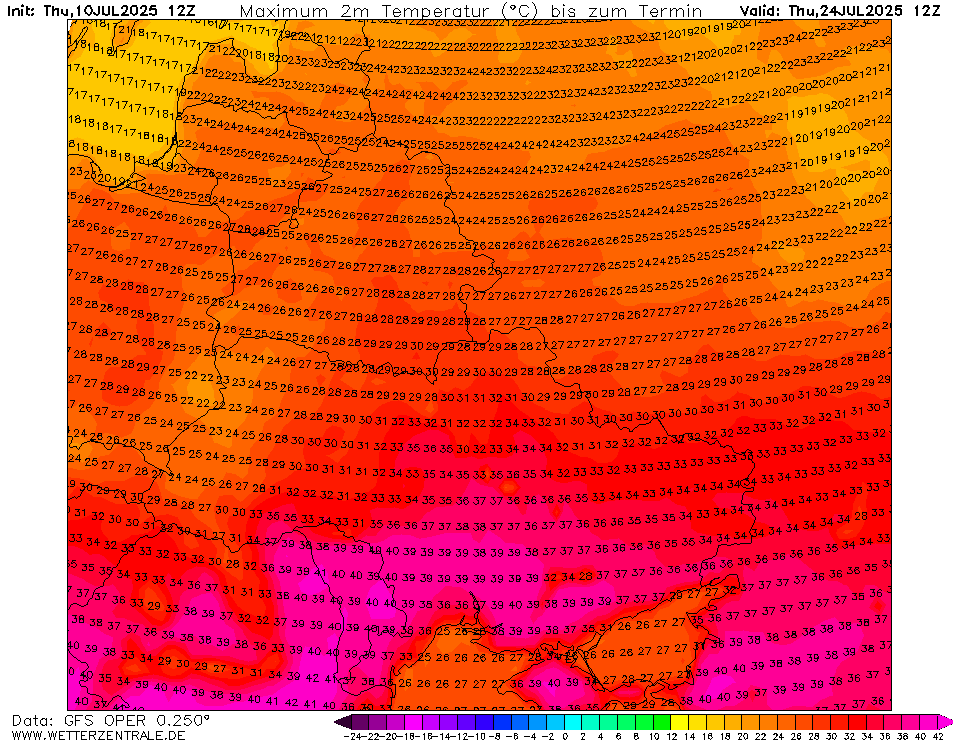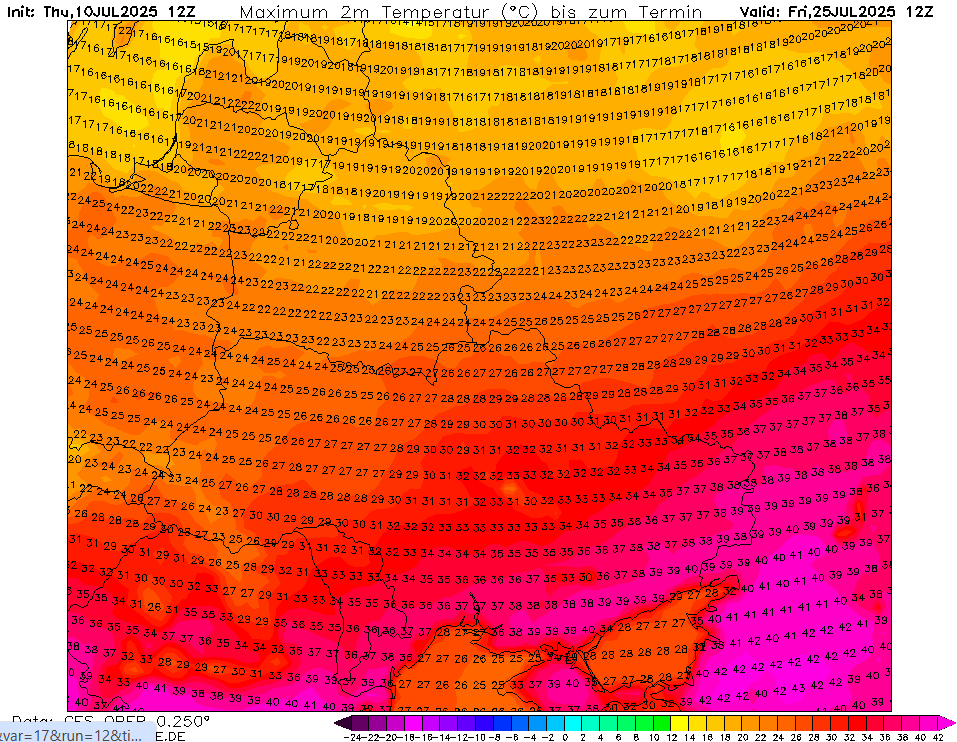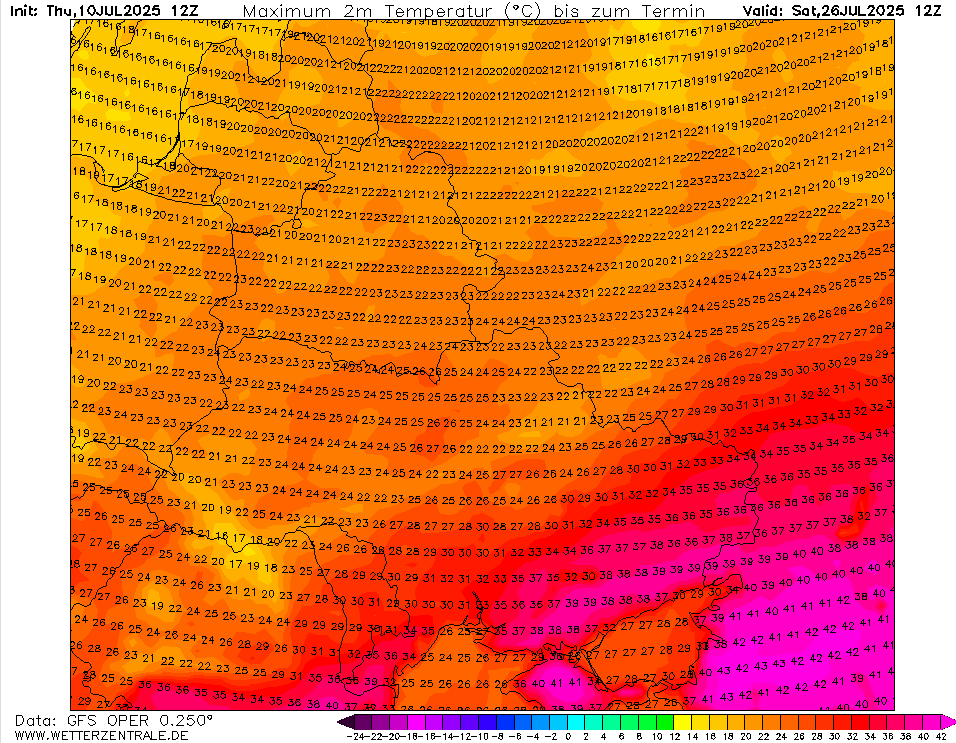
A powerful heatwave is projected to strike Ukraine and Moldova in the last week of July, with the GFS model forecasting maximum temperatures up to +41°C in both countries, especially between July 24 and July 26. This level of heat is exceptional for Eastern Europe, with rare potential to challenge national records in multiple oblasts.
Forecast Highlights
According to the latest GFS outputs (10–11 July 2025):
- Southern Ukraine, particularly in regions like Odesa, Mykolaiv, Kherson, and Zaporizhzhia, may reach +40 to +41°C
- Central and eastern oblasts, including Dnipro, Poltava, and Kharkiv, could see +38 to +40°C
- Moldova, especially Bălți, Tiraspol, and Chișinău, could experience peaks between +39 and +41°C
These forecasts are fueled by:
- A persistent upper-level ridge centered over Eastern Europe
- Hot continental air masses moving from the south and southeast
- Dry soils and lack of cloud cover enhancing solar heating
- 850 hPa temperatures exceeding +25°C, a reliable indicator of extreme surface heat
Historical Context
If verified, these temperatures could be among the hottest ever observed in both countries:
- Ukraine’s national record is 41.3°C, set in Luhansk (2010)
- Moldova’s record stands at 42.4°C, recorded in Fălești (2007)
The upcoming heat could match or surpass the events of 2010, when Eastern Europe suffered one of the deadliest and most prolonged heatwaves in its history.
Expected Consequences
- Severe drought risk, particularly for sunflower and grain crops
- Water supply stress in rural and peri-urban zones
- Power grid overloads during afternoon cooling demand
- High fire danger, especially in steppe and agricultural regions
- Increased health risk for elderly and vulnerable populations, especially in urban centers like Kyiv, Odesa, and Chișinău
Local authorities should prepare public health warnings, secure cooling shelters, and advise against daytime outdoor activities as this dangerous period approaches.
While confidence remains medium-high, exact values will depend on ground moisture, cloud cover, and timing of the ridge axis. However, the current signals from both GFS and ensemble runs indicate a serious threat of extreme heat conditions.




Detail.


























